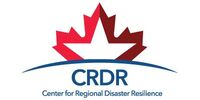The Puget Sound ports – Port of Everett, Port of Olympia, Port of Seattle, and Port of Tacoma – collectively represent the third largest port load center in the nation, with Washington State being one of the most trade-dependent states in the United States. These ports are vital to the local, regional, and interstate economies and are critically dependent on electricity, fuel, rail, road transportation assets, and other critical infrastructures that facilitate the movement of passengers and cargo. The Puget Sound Region experiences significant impacts from natural hazards including floods, storms, fires, earthquakes, tsunamis, and volcanoes. There are also numerous technological hazards, including industrial hazardous materials, military hazardous materials, and vulnerable Critical Infrastructure and Key Resources (CIKR). These hazards are further complicated by human-driven factors such as the potential for terrorist and criminal activity. It is anticipated that given the importance of trade to our economy, a major incident such as an event or terrorist attack in the Pacific Northwest would have a large effect on the flow of commerce. This is based upon the findings published in the 2009 Washington State Hazard Identification and Vulnerability Assessment (HIVA), and given the important role the ports play in our region, state and nationally. It is expected that commerce in the region and throughout the state would likely grind to a halt following a major incident or event involving an earthquake on one of the Northwest’s major fault systems or a terrorist attack against a single point target or multiple targets of critical infrastructure. To further address the Port of Tacoma’s interest in an analytically driven exercise supported by realistic simulation, the PSMRT used the results of the Phase I exercises to design and develop an interactive simulation of the economic interdependencies within the regional maritime transportation community. This technology was used as the foundation for the design, development, conduct, and evaluation of a regional discussion-based exercise for Phase II of the exercise program. This exercise was the first of its kind, incorporating regional players with the economic models that focused on the recovery phase of incident management. Integrating advanced modeling and simulation technology into the discussions provided the framework to achieve a common understanding of the need for a sustainable regional recovery program between Puget Sound’s public and private sectors. The Phase II regional exercise focused on port-wide risk management, mitigation, continuity of operations, and resumption of trade after an earthquake. The exercise used an earthquake scenario that impacted maritime commerce and engaged the private sector, local, state, tribal, and federal governments. The Regional Catastrophic Transportation Disaster Recovery Plan was also exercised with a focus on the identification of interdependencies between industries that centered specifically on disaster recovery, beginning at day 31 post-disaster and continuing out to year five. Both Phase I and Phase II of the exercise program were very well attended, with representatives from the local, state, tribal, and federal levels of government, along with numerous private sector entities, and port employees. In the Phase II regional exercise, the participants were split into breakout groups to focus on the geographic region surrounding a specific port. An additional breakout group for representatives of State and Federal entities created an opportunity for discussion of individual department and agency priorities at that level as well as providing a single point of reference for any questions or concerns generated by the local breakouts. In these smaller groups, each port was able to use feedback from the regional simulation to inform their tactical and strategic decisions on specific recovery investments. This allowed the groups to see how their decisions directly affected their port’s financial recovery in near real-time during the exercise. Plenary sessions were used to report out the group work and to view the projected effect each port’s decision made on the region’s economic recovery. During this phase, the team integrated both the qualitative and quantitative elements. These tools were used to inform the facilitated discussion. With the help of the simulation tools, the participants were able to experience the potential physical, economic, and financial impacts of a catastrophic earthquake and view the results of their recovery planning in a new way. This allowed the participants of the region to expand their knowledge of the potential impacts. These tools also help the participants observe the level of effort that will be required to recover from such a large scale event or disaster. The exercise provided a forum for the ports and the regional stakeholders to build a broader joint understanding of the economic impact of such an event. Read the full report here. Major TakeawaysStrengths
Areas for Improvement
Participants exhibited impressive momentum and desire to work rapidly to identify key problems that need to be solved and commitment to a timeline to solve the issues and problems. Attendees agreed the exercises were beneficial and the content addressed would assist the ports with reducing future disaster recovery times. Stakeholders agreed they were reminded of the importance of listening to one another and highlighted the value of building relationships. By engaging a broad spectrum of government and private sector participants from across the ports in this exercise program, regional recovery strategies and plans were initiated. As the contract comes to a close, the participants, the ports, the cities, and the region have all benefited from the recovery exercises by identifying areas for improvements, recognizing their strengths, strengthening their relationships, and gaining a better understanding of options and challenges for port and regional recovery following a significant disaster.
1 Comment
|
Categories
All
Archives
October 2021
|

